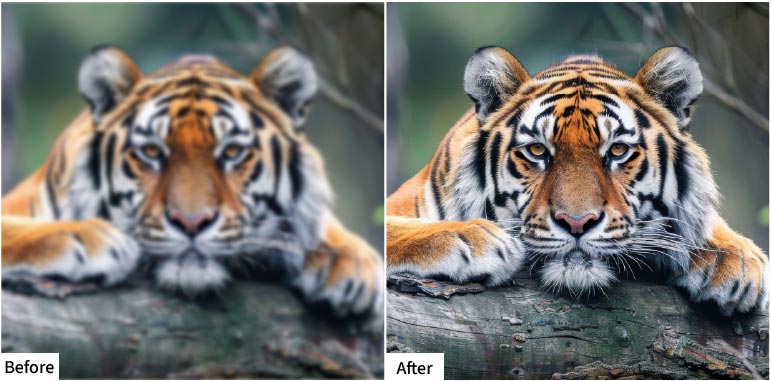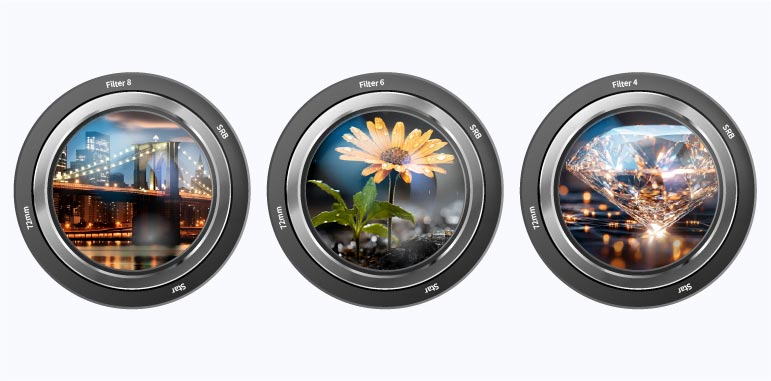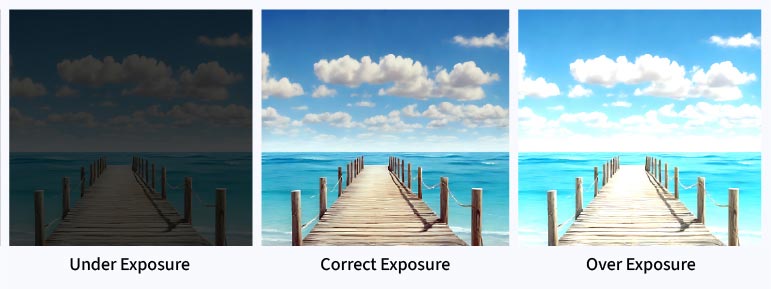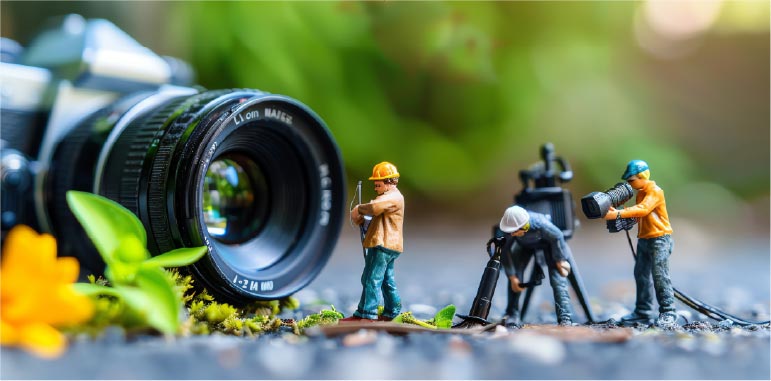10 Powerful eCommerce Data Collection Strategies & Examples
Mastering photography tips for easy editing helps you to capture photos that require minimal editing and can be efficiently processed. Proper camera settings, composition and lighting techniques streamline the workflow, while expert editing services handle adjustments for professional results.
Table of Contents
Capturing striking photos goes beyond the click of a button; it extends into an efficient photo editing workflow. The editing process demands detailed adjustments and complex retouching. By employing photography tips for easy editing, you can significantly simplify post-production. Whatever remains can be handled by experts in the field.
Pre-production planning is crucial, setting the foundation for a smooth editing experience. Effective lighting techniques for minimal editing can minimize the need for extensive edits, allowing natural shots to shine. Mastering composition strategies for impactful photos ensures your images are visually striking from the start.
These practices enhance photo quality and streamline the editing process. With careful planning and attention to detail, you can create beautiful photos that require minimal adjustments, saving time and effort in post-production.
Here, we have shared some essential tips for capturing better photos, effective pre-production planning, and strategies to make the editing process more efficient and less time consuming.
Here are 10 photography tips for easy editing to improve your skills and make the editing process more efficient. While these tips reduce the need for extensive editing, some adjustments may still be necessary, and experts are available to assist.
For example, a US-based photography and videography company enhanced its brand value by partnering with a real estate photo retouching expert to perfect its raw images.
This is a fundamental step in capturing high-quality photos that require minimal editing. Learning to use manual settings like aperture, shutter speed, and ISO, gives greater control over your images.
For instance, consider a landscape photographer capturing a sunset scene. By manually adjusting the aperture to f/11 for a deep depth of field, setting the shutter speed to 1/60s to capture motion, and choosing ISO 100 for minimal noise, the photographer ensures the image is well-composed and properly exposed.

As a result, the photo requires only minimal exposure adjustments in post-processing, saving valuable time and maintaining image quality.
Similarly, shooting in RAW format is crucial for retaining a more detailed and dynamic range than JPEGs.
For example, a wedding photographer capturing a bride’s portrait in RAW format can make significant adjustments in exposure and white balance during editing without degrading image quality. This flexibility allows the photographer to perfect the image, ensuring the bride’s portrait looks stunning while reducing the time spent on complex retouching.
This is essential for capturing visually appealing photos that require less editing. The rule of thirds is a fundamental composition principle that helps create balanced and attractive images.

By placing key elements along the grid lines or at their intersections, you naturally draw the viewer’s eye and enhance the overall aesthetic. For instance, a travel photographer might place a lighthouse on one third of the frame, resulting in a composition that is visually pleasing and requires no cropping in post-processing.
Similarly, incorporating leading lines and natural framing into your shots significantly improves engagement. Leading lines guide the viewer’s eye through the photo, creating a sense of depth and movement.

A street photographer might use the lines of a crosswalk to direct attention to the subject, making the image more dynamic. This technique reduces the need for extensive post-processing adjustments to enhance focus and composition, as the photo is already compelling straight out of the camera.
By mastering these composition strategies, photographers can capture images that are striking and require minimal adjustments.
Lighting is crucial for capturing high-quality photos that do not require much editing. Natural light, particularly during the golden hour, provides soft and flattering illumination that enhances the subject’s features. This period, shortly after sunrise or before sunset, offers warm and even lighting that minimizes harsh shadows and blown-out highlights.
For example, a portrait photographer who schedules shoots during the golden hour can achieve beautiful, naturally lit images that require minimal shadow correction in post-processing.

In addition to natural light, artificial lighting setups, such as soft boxes and reflectors help in creating evenly lit scenes. Proper lighting reduces harsh shadows and highlights, making the editing process simpler.
For instance, a product photographer might use a softbox to ensure even lighting on a product, minimizing shadows and reflections. This careful lighting setup results in photos that require less extensive retouching, allowing for a quicker and more efficient editing workflow.
Mastering both natural and artificial lighting techniques helps you produce well-lit images.

Struggling with lighting? Let our experts perfect your photos!
Mastering focus techniques and using stabilizing tools like tripods, you can capture sharp images that make the editing process more efficient and less time consuming. Utilizing autofocus for quick shots and switching to manual focus for critical situations can significantly enhance image clarity.
For instance, a wildlife photographer may switch to manual focus to capture a bird in flight, ensuring the image is sharp and eliminating the need for post-processing sharpening. This approach preserves details and reduces editing time.

Using a tripod is another effective way to achieve sharpness and to avoid motion blur. A stable camera ensures that the images are clear and crisp, which minimizes the need for corrections later.
For example, a landscape photographer might use a tripod to shoot a long exposure to a waterfall, ensuring the resulting image is sharp. This technique avoids the need for blur correction in post-processing, saving valuable time and maintaining image quality.

Focusing on white balance and using tools such as grey cards, photographers can capture images with accurate colors, ensuring high-quality results. Achieving accurate colors in your photos starts with setting the correct white balance in-camera. This practice ensures that the colors in your images are true to life, reducing the need for extensive color correction during editing.

For instance, a food photographer might set a white balance to match the lighting conditions, ensuring that the colors of the dishes appear natural and appetizing. This careful adjustment minimizes the time spent on color correction in post-processing, making the workflow more efficient.

Using a grey card is another effective method for maintaining consistent color accuracy. A grey card helps to set a precise white balance before the shoot, ensuring uniformity across all images.
For example, a fashion photographer might use a grey card to achieve accurate colors in different lighting setups, ensuring that the hues of the garments are consistent. This practice simplifies color adjustments during editing, saving time and effort.
Keeping backgrounds simple is essential for capturing high-quality images that require minimal editing. Opting for clean, uncluttered backgrounds helps to ensure that the subject remains the focal point of the photo. This approach reduces the need for background removal or extensive retouching, saving time and maintaining image quality.

For example, a portrait photographer might position the subject against a plain wall, to avoid distracting elements and reduce the need for background retouching during post-processing.
Additionally, checking the edges of the frame for distracting elements before taking the shot can further simplify the editing process. By removing any unwanted objects in-camera, photographers can avoid the need for cropping and cloning in post-processing.
For instance, a street photographer might scan the scene for any distractions before capturing the shot, ensuring a clean composition. This practice helps preserve the original composition and quality of the image, making the editing workflow more efficient.
Applying filters and effects in-camera for minor adjustments can significantly reduce the need for extensive post-processing.

For example, a landscape photographer might use an in-camera ND filter to balance the exposure between a bright sky and a darker foreground. This technique minimizes the need for exposure blending in post-processing, allowing the desired look to be achieved quickly and efficiently.
However, it’s important to avoid relying too heavily on in-camera effects. Shooting clean, high-quality images ensures a better starting point for edits and preserves the integrity of the photo.

For instance, a portrait photographer might capture images without applying heavy in-camera effects for high-quality files that are easy to enhance during editing. This approach reduces the need for corrections that degrade image quality and allows for more precise and controlled adjustments.
By applying filters judiciously and focusing on capturing clean images, photographers can streamline their editing process, achieving professional results with less effort.
Getting the exposure right is crucial for capturing images that require minimal editing. Using the histogram to ensure proper exposure helps preserve details in both highlights and shadows. This technique allows photographers to capture well-balanced images with a reduced need for significant exposure adjustments during editing.

For instance, a landscape photographer might check the histogram to avoid clipping highlights or shadows, resulting in a well-exposed image that requires minimal tweaking in post-processing.
Another effective method is bracketing, which involves capturing multiple exposures of the same scene. This approach ensures that you have a properly exposed image to work with, making the editing process more efficient.
An architectural photographer, for example, might use exposure bracketing to capture the full dynamic range of a scene. By taking multiple shots at different exposures, the photographer can easily blend them in post-processing to achieve balanced exposure, reducing the need for drastic corrections.

By mastering the use of histograms and bracketing, photographers can capture well-exposed images that streamline the editing process, preserving image quality and saving time.
Paying attention to detail is essential for capturing high-quality images that require minimal editing. A pre-shoot checklist ensures that all settings and composition elements are correct before taking the shot. This proactive approach reduces the need for corrections later, saves time and ensures better results.

For instance, a wedding photographer might follow a pre-shot checklist to confirm settings, composition and focus. By catching any issues in-camera, the photographer minimizes the need for post-processing adjustments, leading to a more efficient workflow.
Additionally, spot-cleaning your lens and sensor before shooting can prevent unwanted spots and dust marks in your images. Clean, spot-free images reduce the need for tedious spot removal during editing.

For example, a macro photographer who cleans their lens and sensor before a shoot ensures that their images are free of dust and debris. This practice minimizes the need for post-processing cleanup, streamlining the editing process.
By diligently checking settings and maintaining clean equipment, photographers can capture detailed, high-quality images that require fewer corrections, making the editing process more efficient.
Practicing and experimenting with photography techniques is essential for capturing high-quality images that require minimal editing. Trying different angles and perspectives helps photographers find the most flattering composition, reducing the need for cropping and rotating in post-processing.
For example, a portrait photographer might experiment with various angles to determine the best perspective for each subject. This approach results in images that need minimal cropping or adjustment, preserving image quality and saving time in post.
Continuous learning is important for improving in-camera skills. Staying updated with new techniques and trends helps photographers to produce better quality images that require less extensive post-processing.
For instance, a landscape photographer who consistently practices new methods and incorporates current trends can capture stunning images straight out of the camera. This dedication to learning and improvement leads to high-quality photos that need minimal adjustments, making the editing process more efficient.
Through experimentation and ongoing practice, photographers can enhance their skills, capture exceptional images, and streamline their editing workflow, ultimately producing polished and professional results with less effort.
Following these tips, you can ensure that your pictures come out perfect, requiring minimal edits. The little that would be needed can be handled by experts.
For instance, high-quality image editing of kid’s apparel improved customer engagement for a Kid’s wear retailer based in Dubai. The conversion rate increased for a fashion accessories retailer based in Argentina with enhanced product images.
Mastering these 10 useful tips for capturing better photos can significantly simplify your editing process. By focusing on proper camera settings, composition techniques, lighting and attention to detail, you can create high-quality images that require minimal post-processing.
However, even with the best practices, some level of editing may still be required to achieve perfection, especially for photos for industries like real estate and e-commerce. Professional photo editing services helps elevate your images to the next level, ensuring they meet the highest standards. Embrace these tips and consider expert editing support to produce stunning, enticing, and polished photos effortlessly.
What’s next? Message us a brief description of your project.
Our experts will review and get back to you within one business day with free consultation for successful implementation.
Disclaimer:
HitechDigital Solutions LLP and Hitech BPO will never ask for money or commission to offer jobs or projects. In the event you are contacted by any person with job offer in our companies, please reach out to us at info@hitechbpo.com
Leave a Reply